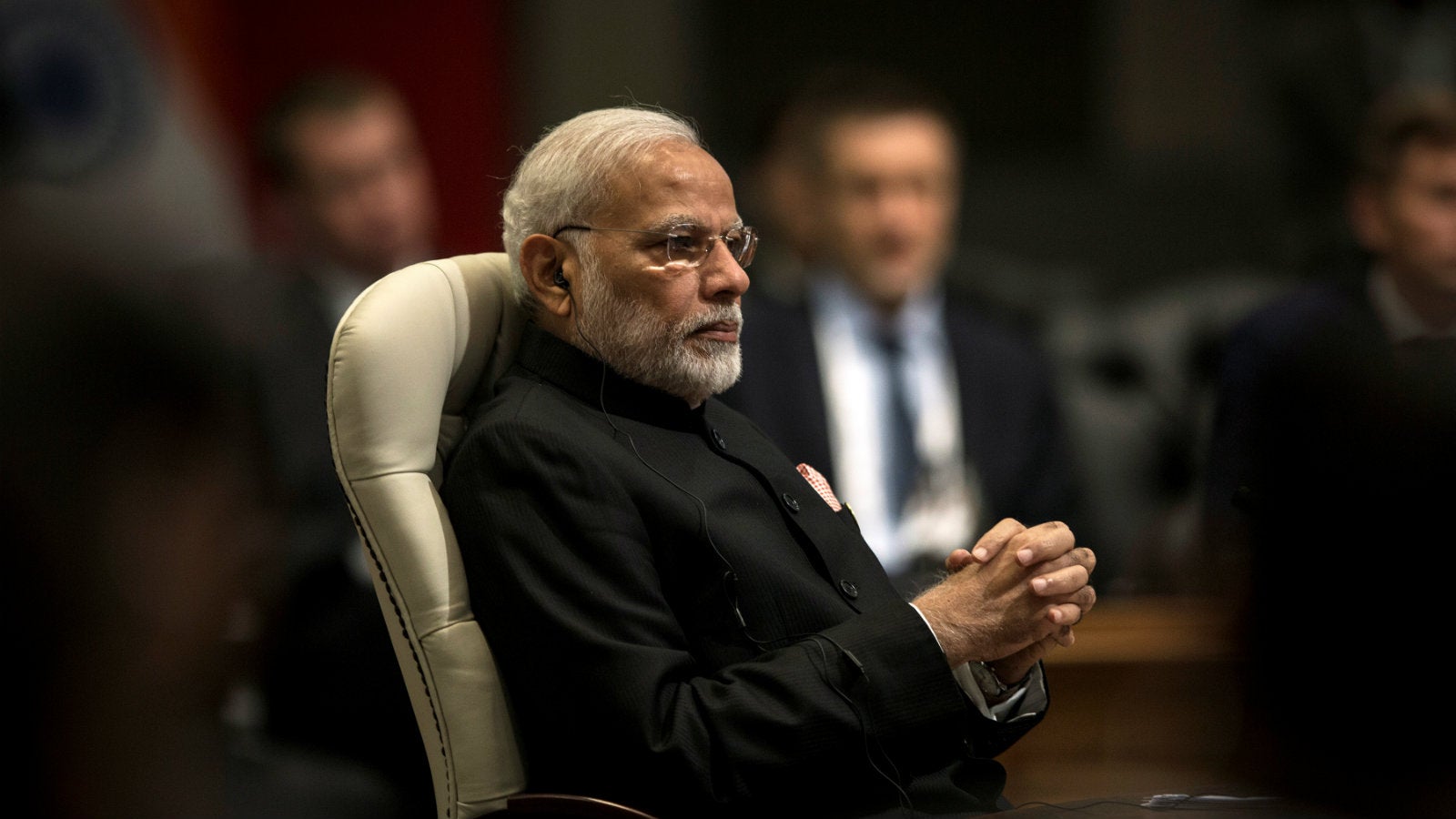Modi is dishing out e-mail interviews, and the media is lapping it up
Over the weekend, three of India’s biggest media companies published sweeping interviews with prime minister Narendra Modi.


Over the weekend, three of India’s biggest media companies published sweeping interviews with prime minister Narendra Modi.
Responding to questions from The Times of India and the Hindustan Times newspapers, and news agency ANI, Modi highlighted his government’s achievements over the past four years while also addressing the criticism over its record on creating jobs, the spread of fake news, and rising vigilantism by self-proclaimed protectors of cows, which has fueled a spate of mob violence and lynchings across the country.
These exchanges come at a time when the Modi government has its back to the wall because of the serious misgivings over a mega defence deal with French aircraft maker Rafale. Doubts over propriety and manipulation of processes in the deal have been raised not just by the opposition parties but even by former Bharatiya Janata Party (BJP) colleagues.
Curiously, all the interviews were conducted over email, with no follow-up questions—the latest sign of the dispensation’s obsession with controlling the media narrative.
For instance, while The Times of India raised the question of the government’s failure to create enough jobs, Modi’s response, laying the blame on the lack of data, was left unchallenged:
“Rather than the so-called failure of this government to create jobs, I believe the shortcoming lies in the absence or lack of a streamlined database of jobs. Naturally, in the absence of information, our opponents will exploit this situation and blame us for not creating jobs.”
In the last four years, Modi has earned the distinction of being the only Indian prime minister to have never held a press conference, preferring to use Twitter as his platform of choice and giving televised interviews to select networks that have largely shied away from asking tough questions. Earlier this year, a carefully orchestrated interview with lyricist and Indian censor board chief Prasoon Joshi during a trip to the UK was widely panned for its soft questions that side-stepped the country’s political and social issues.
At the beginning of his tenure as leader of the world’s largest democracy, Modi set the tone for the government’s approach to the media by doing away with the practice of allowing journalists to accompany him on foreign trips. More recently, members of the BJP were told to avoid commenting on incidents and “giving masala to the media.”
Concerns have also been raised over the state of press freedom in India—it ranked 138 out of 180 in the 2018 Press Freedom Index—given the several instances of articles critical of the government being taken down or attracting lawsuits.
Most recently, the resignations of two journalists from Hindi channel ABP News indicated another troubling trend: the rise of self-censorship and the chilling effect of government pressure on the media. On July 08, ABP’s primetime show, Masterstroke, had alleged that a woman shown saying in a video interaction with Modi that her farm income had doubled was actually tutored to do so. This sparked a blowback, leading to the resignation of the channel’s managing editor. A prime-time anchor hinted at the pressure journalists increasingly face. Then, there is the 200-member media monitoring team reportedly tasked with tracking how TV channels portray Modi and BJP president Amit Shah.
In the run-up to the 2019 national elections, the latest email interviews yet again reinforce the government’s problematic press strategy, and the media’s willingness to accept it.
But it doesn’t have to be this way. In 2015, French newspaper Le Monde was offered an email interview with Modi instead of an interaction. They declined to publish it.